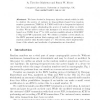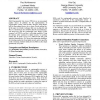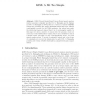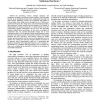71 search results - page 4 / 15 » DNA-based random number generation in security circuitry |
CHES
2009
Springer
14 years 8 months ago
2009
Springer
We have devised a frequency injection attack which is able to destroy the source of entropy in ring-oscillator-based true random number generators (TRNGs). A TRNG will lock to freq...
FSE
1998
Springer
13 years 11 months ago
1998
Springer
In this paper we discuss PRNGs: the mechanisms used by real-world secure systems to generate cryptographic keys, initialization vectors, "random" nonces, and other values...
FPGA
2004
ACM
13 years 11 months ago
2004
ACM
Field Programmable Gate Arrays (FPGAs) are an increasingly popular choice of platform for the implementation of cryptographic systems. Until recently, designers using FPGAs had le...
IACR
2011
12 years 7 months ago
2011
KISS (‘Keep it Simple Stupid’) is an efficient pseudo-random number generator originally specified by G. Marsaglia and A. Zaman in 1993. G. Marsaglia in 1998 posted a C versio...
DATE
2010
IEEE
13 years 10 months ago
2010
IEEE
An increasing concern amongst designers and integrators of military and defense-related systems is the underlying security of the individual microprocessor components that make up ...




